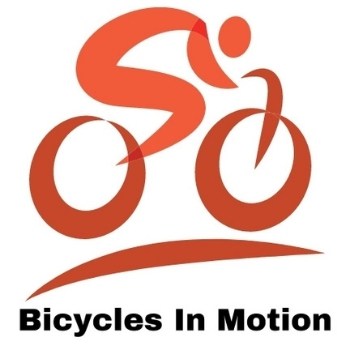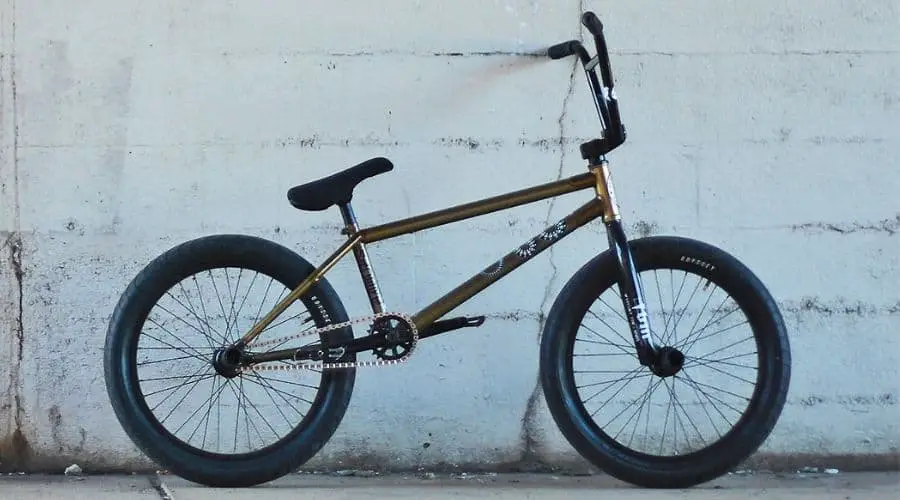Single speed bikes have a freewheel that screws onto threads of the rear wheel. This style is often misunderstood because ‘single-speed’ is used as a blanket term that can refer to many different types of bicycles.
Meanwhile, fixed gear bikes lack a freewheel. Are BMX bikes fixed gear?
BMX bikes are not fixed gear because that would limit their motion, making tricks dangerous. Although you can always buy a custom bicycle made to the specifications, pre-made BMX bikes are single speeds instead of fixed gear to help maintain the necessary control for stunts. That additional control from the freewheel is vital to make tricks possible and racing safe.
Recommended Gear
To see all of my up-to-date recommendations for bikes and cycling gear, check out this resource that I made for you!
Table of Contents
Are BMX Bikes Single Speed
BMX bikes are single speed. This means that they technically have one gear, but it’s called a gearless bike since you can’t change gears.
You can pedal, and when you stop, the bike will move, but the crank doesn’t need to keep turning for the wheels to remain in motion.
There are other types of single-speed bikes, and fixies or fixed wheel bikes are often considered among these.
Still, there’s a significant difference between a fixie and a single speed like a BMX because fixed gears require the crank and pedals to move whichever direction the tires are going and stopping one will stop the other.
As Bike Radar describes it, “A single-speed bike has only one gear ratio – a single chainring and only one rear sprocket… A single-speed bike gives you a single gear ratio with a freewheel. This means you can stop pedaling and coast as you ride, as you would with a regular geared bike.”
Can BMX Bikes Have Gears
BMX bikes do not have gears, but that doesn’t mean it’s impossible to put them on.
A few highly customized BMXs have been built to accommodate extra gears, but most never will be because it’s not necessary.
The point of riding a BMX is to push hard and power through a dirt track or stunt with a burst of energy.
Gears on bikes exist to help you save energy for much longer rides where being efficient and conservative are key to riding success.
The style and purpose are not conducive to added gears. Furthermore, gears add weight. When your goal is to catch air at the park, more weight is bad and can mess up your tricks.
Alternately, when BMX riders want to fly around a dirt track, the simplest gearing possible is critical. More gears mean more parts to get dirt in and more chances of acute failure, worn-down pieces, and accidents.
By skipping the cassette and derailleurs, BMX riders are avoiding the most failure-prone parts and making it easier to clean and maintain their BMX.
Asking to put more gears on a BMX is like asking if you can add microchips to an analog clock because it gives a simple machine more chances to break down without adding any improvements.
Why Do BMX Bikes Have No Gears
BMX bikes do not have multiple gears, but they do have one. Using a single-speed or one-gear setup allows these bikes the benefit of moving forward on momentum without the pedals automatically turning along with the wheels.
However, they don’t have multiple gears because they don’t need them.
Multispeed bikes are made for riding long distances and varied terrain, while BMX riders travel short distances for stunts or have short races over dirt tracks.
The more complex gears add weight and can cause other issues. For example, the U-style brake on some BMX models requires a small sprocket and rear cog to avoid pressing the chain against the brake.
Adding more and larger parts would cause the same problem and make it more complex to fix.
What Is The Best Gear Ratio For BMX
The gear ratio for your BMX is vital, but there is no single answer to what the ‘best’ gear ratio is for your bike.
The smallest gear ratio possible is often the best option, but different ratios have unique advantages, and the smallest on one frame size isn’t the smallest for a different frame.
Moreover, the style of the bike plus how the rider uses it combine to change what works best for that particular bike.
I will explain how the proportions work to help you find the one that works for you. First, this is not merely an issue of the gears.
Your crank length also matters because it affects how fast you pedal and how much force you need to push the pedals.
The gear ratio and crank size should add up to a leg speed (pedaling pace) you are comfortable continuing.
Longer cranks are slower but easier to push, and shorter cranks are the opposite, hard to drive forward but also faster to rotate.
The smaller your gear, the quicker you move up to a point. However, you need to quickly push your cranks to take advantage of that smaller gear.
So, while a larger gear is slower, it only matters if you move fast enough to downsize to a different ratio.
A larger gear can be beneficial, adding comfort and efficiency for riders who aren’t racing or moving super-fast.
If you want to learn more about gear ratios and sizes, I recommend this informative video from Two Wheels.
The video explains how the numbers attached to gears work and where they come from to help you better understand how they work.
Helpful Tips To Know About If BMX Bikes Are Fixed Gear
BMX bikes are single speed, not fixed gear bikes because they need pedals that drive the bicycle forward but are not tied to the motion of the wheels at all times.
Once the rider stops pedaling, the bike keeps going without crank movement until friction, brakes, or an object in the way slows them down.
Here are more helpful tips to know about if BMX bikes are fixed gear.
- Just as you can get a multispeed BMX, you could custom order a fixed gear BMX, but it would not help do the things most BMX bikes do. Pedals that move with the wheels make it hard to do jumps or perform tricks.
- A Fixie or fixed gear bike is different from a single speed. Pure Cycles explains, “Fixie is short for fixed gear… it means that the cog is directly tied to the motion of the pedals… On a fixed-gear bike, that piece doesn’t have a bearing in it, and it is fixed to the back wheel. Typically, these cogs would have a ball bearing system to allow the wheel to spin independently of the cog. On a fixed-gear bike, this isn’t so… if you pedal forward, the bike moves forward. If you pedal backward, the bike moves backward.”
- It is crucial to try out different frame and wheel sizes if you are new to BMX and decide whether you want a racing or freestyle BMX. However, it is also essential to test different gear ratios and crank lengths to find the most comfortable combination for you.
Final Thoughts
Unless you go out of your way to buy a custom-built BMX, then it’s not a fixed gear bike. All BMX are single speed with a freewheel that will propel the tire forward and then allow it to continue moving when the cranks and chain are not in motion.
This bicycle-style needs to be a single-speed to perform tricks and race safely. If your BMX were a Fixie, then the cranks, chain, and pedals would have to move the same direction as the wheels at all times and stopping them would stop your bike.

